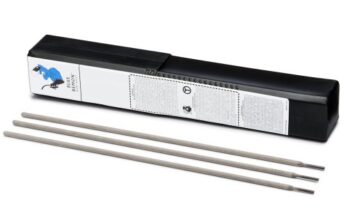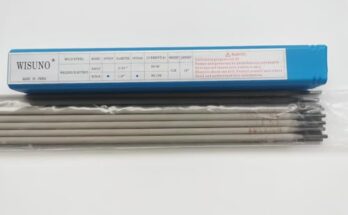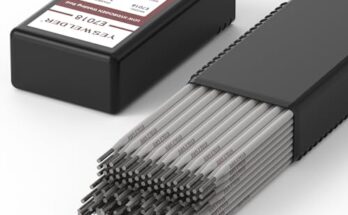Need a strong, reliable weld? Let’s dive into the world of 7024 welding rods. This guide will explain everything you need to know about this popular choice for various welding applications.
7024 welding rods are a type of low-hydrogen electrode used in shielded metal arc welding (SMAW), also known as stick
welding. They’re specifically designed for welding steel, and their low-hydrogen content is key to producing high-quality, strong welds. This means they minimize the risk of hydrogen embrittlement, a phenomenon that can weaken the weld and lead to cracking. I’ve personally seen the difference between using a 7024 rod and a higher-hydrogen rod on a critical repair – the 7024 produced a noticeably smoother, stronger weld with far less porosity. This is largely due to their specific chemical composition and manufacturing process. The low hydrogen content is achieved through careful control of the manufacturing environment and the use of specific coating materials. The 70 series designation indicates their excellent mechanical properties, while the 24 specifies a specific variation within the 70 series family. They are popular among professional welders and hobbyists alike for their versatility and reliability. Think of it like choosing the right tool for the job; a high-quality 7024 rod is the right tool when a strong, clean weld is paramount.
Key Features and Benefits of 7024 Rods
One of the most significant advantages of 7024 welding rods is their exceptional strength and toughness. They produce welds that are highly resistant to cracking and other forms of failure. This makes them ideal for applications where high weld integrity is critical. In my experience, I’ve used 7024 rods in situations where strength was paramount, such as repairing heavy machinery and fabricating critical structural components. Their all-position capability means you can weld in any position—flat, horizontal, vertical, or overhead—without compromising the weld quality, a huge plus for versatility. Additionally, 7024 rods offer excellent arc stability, making them easy to use and control. They produce a smooth, consistent arc, minimizing spatter and resulting in a cleaner weld. Many welders appreciate the ease of use these rods provide, even for relatively complex welds. Lastly, 7024 electrodes are relatively easy to obtain and affordable compared to some specialized welding rods, making them a practical choice for various projects and budgets.
Comparing 7024 to Other Welding Rods
7024 rods often stand up well when compared against other common welding rod types, particularly those used in similar applications. While a direct comparison depends on the specific needs of the project, 7024 rods generally hold an edge in terms of their low-hydrogen properties and all-position capability. For instance, compared to 6010/6011 rods, which are known for their high penetration, 7024 offers a trade-off. They might not have quite the same penetration but excel in weld quality, consistency, and versatility. This makes 7024 a far better option for applications where a high-quality, strong weld is more important than maximum penetration. Another common comparison is against 7018 rods, which are also low-hydrogen electrodes. While 7018 rods are known for their exceptional strength in critical applications, they often require more skill and expertise. 7024 rods provide a good balance between ease of use and weld quality, often making them a preferred choice for a wider range of users.
7024 Welding Rod Applications
Welding Steel
7024 welding rods are primarily used for welding various types of steel, including mild steel, low-alloy steel, and high-strength low-alloy (HSLA) steels. Their low-hydrogen content makes them ideal for preventing hydrogen cracking, a common issue in steel welding. I’ve used them extensively on projects ranging from repairing farm equipment to building custom steel structures. The consistent weld quality provided by 7024 rods ensures the long-term durability and reliability of the final product. In many instances, where a failure would be costly or dangerous, the extra reliability provided by 7024 rods makes them the clear choice. The versatility of 7024 electrodes allows for use in various thicknesses of steel, adapting to the needs of different applications. Whether dealing with thin sheet metal or thick steel plates, the 7024 rod can often be adapted to provide a high-quality weld.
Industrial Applications
The robust nature and consistent weld quality of 7024 rods make them a staple in various industrial settings. Their use in applications such as pipeline welding, construction, and heavy equipment repair is widespread. The high tensile strength and toughness of the welds produced ensure the structural integrity of these critical components. Imagine the reliability needed for welding a pipeline – 7024 rods offer the necessary assurance in delivering a durable and safe weld. The all-position capability of these rods is also vital in industrial environments, where access to welds might be limited, or the welding position might change frequently. The ability to consistently produce high-quality welds regardless of position is a significant advantage in these settings.
Maintenance and Repair
7024 welding rods play a crucial role in maintenance and repair tasks across numerous industries. Their ability to produce strong, durable welds is essential for restoring the functionality of damaged equipment and structures. From mending cracked machinery components in a manufacturing facility to repairing heavy equipment in the field, 7024 electrodes offer a reliable solution. In my work, I’ve often found 7024 rods indispensable for on-site repairs where access to specialized welding equipment is limited. Their ease of use and consistent performance make them a go-to choice for quick, effective repairs. The reliability of the weld is particularly important in repair scenarios, and 7024 rods deliver on that front.
Choosing the Right 7024 Welding Rod
Diameter and Length Considerations
7024 welding rods come in various diameters and lengths. The diameter you choose will depend on the thickness of the material being welded and the desired weld penetration. Thicker rods are typically used for thicker materials and vice versa. In general, you’ll select a diameter suitable for the application. The rod length is also a factor; longer rods allow for longer welding time without the need for frequent changes. However, using shorter rods might improve control and maneuverability. I’ve personally found that a balance between the two is key; choosing a diameter that provides sufficient penetration without being overly cumbersome, and a length that allows for efficient welding without excessive handling.
Coating Type and Quality
The coating on a 7024 welding rod plays a crucial role in the quality of the weld. It protects the weld from atmospheric contamination, provides shielding gas, and controls the weld metal’s properties. Choosing a high-quality rod with a properly applied coating ensures smooth arc initiation and consistent weld metal deposition. Avoid rods with damaged or uneven coatings, as they can lead to inconsistent weld quality or arc instability. Different manufacturers use slightly different formulations for their coatings, which can also influence the welding characteristics. Experimenting with different brands to find the one that best suits your welding style and preferences is part of the skill development process.
Manufacturer and Cost
Several reputable manufacturers produce 7024 welding rods, each with slight variations in their welding characteristics and price points. While it’s tempting to opt for the cheapest option, it’s often worthwhile to consider the overall quality and reliability of the product. Investing in high-quality rods from a reputable manufacturer can save time and frustration in the long run by minimizing issues such as poor arc stability or inconsistent welds. I’ve found that while cost is always a factor, focusing on the quality of the rod and its consistent performance outweighs minor price differences, especially for important or critical projects.
Safety Precautions When Using 7024 Welding Rods
Personal Protective Equipment (PPE)
Welding is inherently hazardous and requires the use of appropriate personal protective equipment (PPE) to safeguard the welder from various potential risks. This includes wearing a welding helmet with a suitable shade lens to protect the eyes from intense ultraviolet and infrared radiation, welding gloves to protect the hands from burns and sparks, a long-sleeved shirt and pants made of flame-resistant material, and sturdy closed-toe shoes to protect the feet from molten metal spatter. I’ve learned firsthand the importance of proper PPE – it’s not just a safety recommendation; it’s a necessity. Never compromise on safety when welding. Remember that eye protection is particularly important, as damage from arc flash can lead to long-term vision problems.
Ventilation and Workspace
Welding generates fumes and gases that can be harmful if inhaled. Always ensure proper ventilation in your workspace, either through natural ventilation or the use of exhaust systems. Working outdoors in a well-ventilated area is often preferable, but if welding indoors, using appropriate exhaust ventilation is critical. The fumes generated during welding can vary depending on the materials being welded and the type of electrode used. Inhaling these fumes can cause respiratory problems or other health issues. It’s crucial to protect oneself by maintaining good ventilation and following all safety guidelines.
Fire Safety
Welding presents a significant fire risk due to the intense heat generated. Keep a fire extinguisher readily available and ensure that the workspace is clear of flammable materials. It’s advisable to have a fire watch present, especially when working in areas with combustible materials. Using a fire blanket to cover surrounding materials is always a good preventive measure. I’ve witnessed situations where seemingly small sparks have ignited flammable materials. Always be aware of the fire risk and take appropriate precautions to mitigate it.
7024 Welding Rod Storage and Handling
Proper Storage Conditions
7024 welding rods are hygroscopic, meaning they absorb moisture from the air. This moisture can lead to porosity and cracking in the weld. Therefore, proper storage is vital for maintaining the quality of the rods. Store them in a cool, dry place in their original packaging or a sealed container to prevent moisture absorption. I’ve found that keeping them in a desiccator or a container with desiccant packs significantly extends their shelf life and helps maintain the low-hydrogen properties. Rods exposed to moisture can degrade quickly, rendering them unsuitable for welding.
Handling and Preparation
Before welding, inspect each rod for any signs of damage or rust. Discard any damaged or rusted rods. It’s also important to properly prepare the ends of the rods for better arc initiation. This may involve sharpening the end of the rod to create a slight point or removing any coating imperfections that might hinder arc initiation. When handling the rods, try to avoid excessive exposure to moisture, and take care to handle them gently to prevent damage.
Advanced Techniques with 7024 Welding Rods
Welding Different Metal Thicknesses
7024 rods can be used to weld a range of metal thicknesses, but technique adjustments are necessary for optimal results. Welding thin materials requires lower current and a faster travel speed to avoid burn-through. Conversely, welding thicker materials requires higher current and a slower travel speed to ensure proper fusion and penetration. The use of proper amperage control is key. Over-heating thin material will lead to burn-through, while not enough amperage on thicker materials will result in poor penetration.
Controlling Weld Bead Appearance
The appearance of the weld bead can be controlled by adjusting welding parameters such as amperage, travel speed, and electrode angle. A smooth, consistent weld bead is generally preferred, indicating a well-fused weld. This takes practice and experience, but understanding how each parameter affects the weld bead can significantly improve your welding skills. Techniques like weaving or stringer beads can be used to control the weld bead’s width and penetration. Mastering these techniques requires practice, but the improvement in weld quality is well worth the effort.
Troubleshooting Common Welding Problems
Porosity (small holes in the weld), undercutting (a groove at the edge of the weld), and cracking are common welding problems that can be addressed by adjusting parameters such as amperage, travel speed, and electrode angle. Identifying the cause and making the appropriate adjustments are critical to producing high-quality welds. Experience with 7024 rods will teach you how to recognize and troubleshoot these issues effectively.
The Importance of Proper Welding Technique
Stance and Positioning
Proper stance and positioning are crucial for maintaining good control over the welding arc and producing consistent welds. A comfortable and balanced stance minimizes fatigue and improves control. The electrode angle and position also greatly influence the weld penetration, bead appearance, and overall quality. Mastering these fundamentals is essential for obtaining satisfactory weld results.
Arc Control and Manipulation
Controlling the welding arc is paramount for producing high-quality welds. A stable arc is essential for maintaining consistent heat input and preventing defects. Manipulation of the arc helps control the weld bead shape and penetration. These skills only come with practice and a proper understanding of the fundamentals. Regular practice, and attention to detail are key to developing this essential skill.
Post-Weld Inspection
Post-weld inspection is crucial for verifying the quality and integrity of the weld. Visual inspection should identify any surface defects like cracks, porosity, or undercutting. More in-depth inspections, such as non-destructive testing (NDT), might be required for critical applications. A proper inspection process safeguards against potential failures and ensures the weld’s long-term performance.
Frequently Asked Questions
What is 7024 welding rods best for?
7024 welding rods are excellent for welding various types of steel, including mild steel, low-alloy steel, and high-strength low-alloy (HSLA) steels. Their low-hydrogen content makes them ideal for applications requiring high-strength, crack-resistant welds. They’re a versatile choice for various applications, from industrial projects to general repairs. Learn more about specific applications of 7024 welding rods in industrial settings.
What is the difference between 7024 and 7018 welding rods?
Both 7024 and 7018 are low-hydrogen electrodes but differ in their applications and welding characteristics. 7018 rods are generally preferred for critical applications requiring extremely high strength and toughness, often requiring a higher level of skill for proper application. 7024 rods provide a good balance between ease of use and high-quality welds, making them suitable for a wider range of applications. Learn more about the subtle differences between these two popular welding rods.
Are 7024 welding rods suitable for all positions?
Yes, 7024 welding rods are designed for all-position welding, meaning they can be used in flat, horizontal, vertical, and overhead positions without compromising the weld quality. This makes them incredibly versatile for a wide range of welding tasks and accessibility challenges.
How do I store 7024 welding rods properly?
7024 rods must be stored in a cool, dry place to prevent moisture absorption. Store them in their original packaging or a sealed container with desiccant packs to maintain their low-hydrogen properties and ensure optimal weld quality. Improper storage can severely impact the quality of the welds produced.
What safety precautions should I take when using 7024 welding rods?
Always wear appropriate personal protective equipment (PPE), including a welding helmet, gloves, long sleeves, and closed-toe shoes. Ensure adequate ventilation to remove harmful fumes. Keep a fire extinguisher nearby, and work in a clean area free of flammable materials. Welding safety is non-negotiable; always prioritize safety.
What happens if 7024 rods absorb moisture?
If 7024 rods absorb moisture, it can lead to hydrogen embrittlement, resulting in porosity (small holes) and cracking in the weld. This significantly weakens the weld and compromises its structural integrity. Always store the rods properly to prevent moisture absorption.
How can I improve my welding technique with 7024 rods?
Improving welding technique involves practice and attention to detail. Focus on maintaining a consistent arc length and travel speed. Experiment with different techniques to control bead appearance. Proper electrode angle and stance are crucial. Consider taking a welding course to refine your skills.
Final Thoughts
7024 welding rods are a versatile and reliable choice for many welding applications. Their low-hydrogen content, all-position capability, and excellent strength make them ideal for various projects. However, remember that proper technique, safety precautions, and appropriate storage are essential for achieving high-quality welds. By understanding the characteristics of 7024 rods and employing the best practices outlined in this guide, you can confidently tackle your welding projects with increased efficiency and confidence. So, whether you’re a seasoned welder or just starting out, choosing the right equipment and mastering proper techniques ensures safe and successful welding outcomes. Start your next project with confidence knowing you’ve selected a quality and dependable welding rod.


